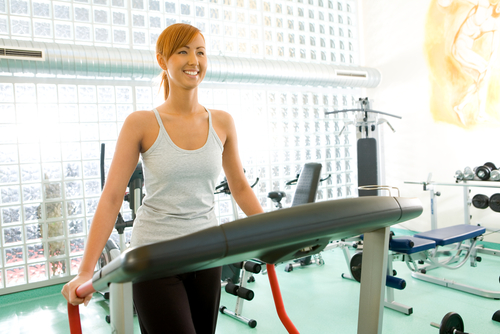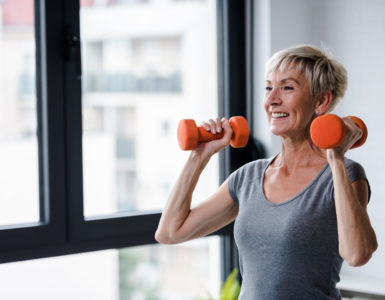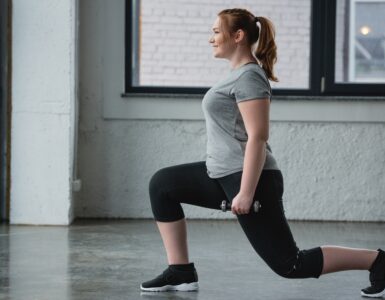There are a lot of workout options out there: kickboxing, step aerobics, cardio machines, belly dancing, yoga, pilates… you name it, there’s a workout for it. But when it comes to convenience, effectiveness, practicality, and those small, but sweet “yeah, I can do this!” triumphs, one workout stands supreme: walking. There’s no question that walking is a great workout. Putting one foot in front of the other is not complicated—we all know how to do it, and it’s something that can be done anywhere, anytime. Beat that.
However, if you’re going to devote precious minutes of your day to walk for exercise, make sure you are using proper form and technique. Proper form helps prevent or reduce the risk of injuries, aches, and pains—which means your walk will feel more comfortable. And when your walk is more comfortable, you’re workouts will be more consistent and you’ll be able to walk longer and faster, covering more ground—and burning more calories—in less time.
Proper Walking Form
The Don’ts:
1) Don’t let your head jet forward or your chin tilt up or down.
2) Don’t let your shoulders hike up toward your ears (walking with a shoulder shrug).
3) Don’t make big front-to-back swings with straight arms.
4) Don’t let the lower back arch.
5) Don’t walk with a long stride (taking long, big steps – it seems natural to go faster by taking longer strides, but it’s actually counterproductive)
The “Do’s”:
1) Do keep your head neutral so that your ears are lined up with your shoulders, and your chin is parallel to ground (just look down with your eyes when walking, not your whole head).
2) Do keep your shoulders down, and lightly squeeze your shoulder blades together to keep your upper body lined up while you walk.
3) Do walk with your arms bent at the elbow to a 90-degree angle; keep your elbows close to your body; swing your arms no higher than your mid chest, and no farther back than the back of your hip; keep your fingers relaxed.
4) Do keep your abdominals contracted, (think about squeezing your belly button in toward your spine); keep your hips neutral (hips should not tilt forward or backward, they should be right in the middle—or neutral; the low back should not arch).
5) Do walk with short, quick strides; keep your feet fairly close to the ground so that your walk is more like efficient gliding rather than tromping along.
Treadmill or Outdoor Walks?
People often wonder if it’s best to use a treadmill, walk outside or use an indoor track. The answer is… whatever is most convenient for you! Outside is always refreshing. But a treadmill is an undeniable worthy investment (or a health club membership) because, warm or cold, treadmills are practical and convenient. Treadmills are great because they have a motor—which essentially drives to work harder and stay consistent. Many times, we really need that extra little kick from a moving belt to keep us going! With a treadmill you can track your total mileage, time, and calories burned. Plus, you can walk anywhere from 1 mile per hour to running at 10 miles per hour—which accommodates everybody from the beginner to the elite athlete. Treadmills also have power incline, which increases the intensity of the workout without having to run or jog… a great benefit for delicate knees, hips, or an achy back.
For great treadmills, check out: www.nordictrack.com
The Talk Test: Are you working too hard? Not hard enough?
Test yourself. During your next workout, try the “talk test” at the middle point/peak of your workout. See how much you can talk. (Yes, this is the easiest test ever.)
If you can carry on full conversations with no trouble at all or tell long elaborate stories, you are not working hard enough! So step it up! (Or plan to stay at that intensity level for at least one hour.) If you are going to take the time to exercise, make sure you work at a level that is going to make a difference in your health.
If you can’t talk at all, you are definitely working too hard and should drop your intensity down to a level in which you can speak a few words and control your breathing.
If you are working and breathing at a level in which you can only say a short sentence at a time, you’re likely working at a “moderate-to-vigorous” intensity level. This would sound like “I’ve done 15 minutes” (breath) “I can do 5 more” (breath). At this level, you would be breathing hard, but still in control. This is the perfect intensity level for your walking workout.
Walking Rx:
Aim for at least 30 minutes of walking, 5 or more days per week. But always remember, anything you do counts. If you take a walk around the block, then good for you. Start there and work up to 30 minutes. You’ll feel better for it.















Add comment